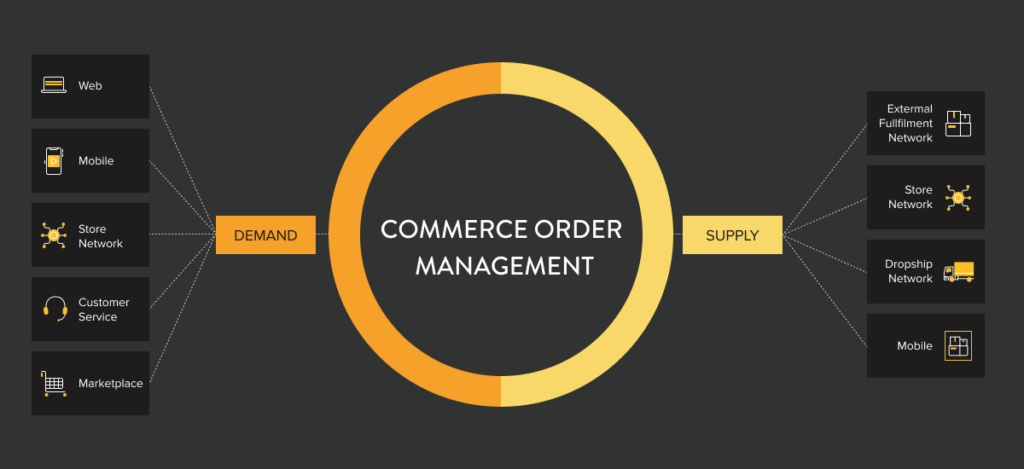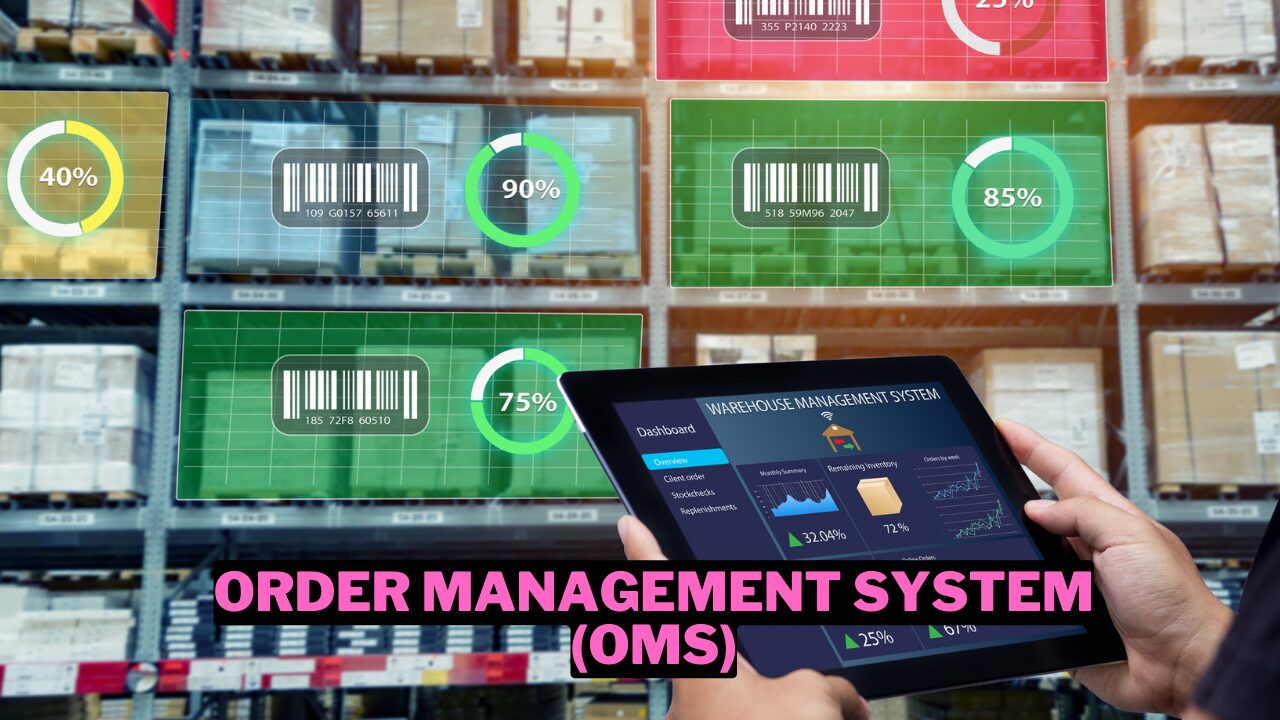For numerous entrepreneurs, effectively managing orders can be a challenge, leading them to seek an improved system. By implementing an order management system (OMS), businesses can enhance the organization and automation of their order processes and product fulfillment. Furthermore, an OMS can provide valuable data insights to address critical concerns for both retail and e-commerce.
enterprises.
Moving to an order management system may seem daunting, but selecting the appropriate platform can establish your business for sustained achievement. This piece will provide insight into the definition of an order management system, its functionality, and tips for selecting the optimal solution for your business.
Read More:
- Best Board Meeting Software
- Best Board Governance Software
- Best Board Portal Software
- Best Board Management Software
- Best Employer of Record (EOR) Services
What Is an Order Management System (OMS)?

Order Management Systems (OMS) are a valuable tool that can assist in streamlining and automating various aspects of the purchasing and fulfillment processes. By utilizing an OMS, both you and your customers can benefit from a more organized and efficient system.
Once an order is placed and a delivery method is chosen, the OMS will initiate an automated process to ensure prompt fulfilment. This can include shipping the order from the nearest or most cost-effective location or preparing the item for convenient in-store pickup.
Additionally, OMS platforms are designed to help you keep track of inventory levels, preventing stockouts and backorders. They can also assist with managing other aspects of the customer lifecycle, such as returns.
With an OMS, your employees and customers can easily view and track each order from beginning to end. Furthermore, the system provides valuable insights for analyzing the overall efficiency of the process.
Order management systems (OMS) have the capability to provide retailers and distributors with comprehensive reporting and analysis, allowing them to monitor and track important performance indicators.
These advanced OMS platforms enable businesses to keep track of various metrics such as order fill time, fulfillment costs (including picking, packing, and shipping), as well as product defect and return rates. By closely monitoring these key metrics, businesses can identify any inefficiencies and develop effective strategies to overcome them.
How does an Order Management System (OMS) Work?
A system for managing orders provides a comprehensive view of the available inventory in your warehouses, physical stores, and third-party suppliers, such as 3PL (third-party logistics) companies and drop-ship locations.
This visibility enables efficient planning and management of inventory. When an order is received, the OMS handles the entire fulfilment process. It captures, verifies, and releases orders, ensuring accuracy and completeness.
The OMS also includes features for picking, packing, and shipping, including support for drop-shipping. It generates shipment confirmations and facilitates communication with customers to keep them updated on their order status.
In addition, a strong order management system (OMS) effortlessly connects with payment systems, simplifying the payment processing and ensuring accurate financial data synchronization. This integration guarantees smooth financial transactions and precise accounting.
When a customer needs to return a product, an efficient Order Management System (OMS) simplifies the entire process. It sets up guidelines for handling returns across all sales channels, facilitates exchange requests, updates the customer’s account with appropriate credits, and effectively manages the entire process of determining the final outcome of the returned product.
Why Is an Order Management System Important?
By implementing an Order Management System (OMS), you can enhance the effectiveness of your order management process by automating various tasks that were previously done manually. This automation improves your company’s capacity to process orders efficiently and swiftly, leading to higher customer satisfaction and improved cash flow and profitability.
With the rapid growth of ecommerce, the significance of order management systems (OMS) is continually increasing. This is primarily due to two reasons. Firstly, OMS allows businesses to meet the expectations of customers by providing them with flexibility in terms of ordering, picking up, receiving, and returning products.
An Order Management System (OMS) provides support for distributed order management. This means that with an OMS, you have the ability to complete an order that requires shipping products from different locations.
Additionally, you can handle returns through both mail and in-store, ensuring cost-effectiveness. One of the advantages of using an OMS is its scalability, allowing your company to accommodate an increase in sales volume and the addition of new sales channels.
Types of Order Management Systems
In the past, businesses used various methods to handle their orders, such as manually recording them in ledgers or storing them in spreadsheets on individual computers. However, order management systems have evolved to become more sophisticated, streamlined, and beneficial.
Individual and enterprise systems
Businesses have the option to purchase Order Management Systems (OMS) software as separate modules that do not connect with other areas of their operations. However, there are more advanced platforms available that offer integration with other software modules, enabling all data to be stored in a single digital location.
This integration allows for greater automation capabilities and the ability to generate comprehensive reports that demonstrate how different aspects of order management impact overall profitability.
Additionally, integrating the OMS with customer relationship management, supply chain, finance, and other business software enhances efficiency and streamlines operations.
Cloud-based options and on-premises
Order Management Systems (OMS) can be implemented as either onsite software or through a SaaS/cloud model. SaaS offers the advantage of quicker and simpler deployment, as well as the option to pay for the system as your business grows.
This model also allows for better scalability and the ability to access the system from anywhere with an internet connection, whether through a browser or mobile app.
Additionally, by choosing the SaaS model, the vendor takes responsibility for maintaining and hosting the application, resulting in a superior user experience and improved reliability.
Order Management Process
An order management process encompasses all the tasks associated with handling customer orders received through various sales channels. This process begins with the creation of new orders and the establishment or updating of customer accounts.
Subsequent steps involve inventory-related activities such as checking and maintaining product availability, as well as the picking, packing, and shipping of items. In the case of point of sale systems, the process also extends to receiving payment.
Additionally, the term “order to cash” may be used to describe a broader perspective of the order management process, which includes managing customer payments, returns, and refunds.
Benefits of an Order Management System
When companies decide to implement an Order Management System (OMS), they often take the opportunity to assess their supply chains for any areas that may be causing delays or inefficiencies.
This analysis alone can often lead to improvements, such as faster order fulfillment times. Additionally, OMS platforms offer several other benefits, including the ability to optimize order fulfillment across all sales channels, reduce labor costs, and improve overall sales and profit margins.
Tighter inventory management
Having a clear view of your sales data can greatly assist in efficiently managing your inventory. This allows you to meet customer demand without having excessive stock. By having a consolidated view of your inventory across different locations, you can avoid missing out on potential sales. These improvements can have a positive impact on your cash flow, while also enhancing customer loyalty and satisfaction.
Reduced data entry
Using Order Management Systems in various aspects of the sales and fulfillment process reduces the need for repetitive data entry, minimizing the chances of errors occurring.
Visibility
Order Management Systems (OMS) allow for enhanced customer service by providing access and tracking of order status to everyone within an organization. Additionally, customers can also utilize OMS to track the status of their order.
Analysis
OMS dashboards can inform decision-making by highlighting sales patterns, tracking KPIs and forecasting sales and inventory levels.
Challenges of an Order Management System
Order management systems (OMS) vary in quality and functionality. Despite using advanced software, businesses may still encounter difficulties. Below are some typical obstacles and suggestions on how to tackle them effectively.
Not integrated
Order Management Systems (OMS) excel when they are integrated with various aspects of your business. Failure to connect your order management system with your customer relationship management (CRM), financial management, supply chain, and other software modules can result in missed opportunities to enhance efficiency and customer service.
Missing features
Order Management Systems provide a user interface that is easy to navigate and provides users with the necessary information to carry out their work responsibilities. This includes the ability to monitor inventory levels, process returns, and perform other tasks.
A crucial feature is the generation of reports presented in visually-appealing dashboards, allowing users to quickly assess key performance indicators. Additionally, it should be possible to access detailed customer information, such as order history.
Other important features to consider include integration with point-of-sale systems, a reliable customer support team, and the capability to prioritize orders for shipping and in-store pickup.
Lack of configuration
When it comes to managing orders, it is important to provide different employees with access to your Order Management System (OMS) at various stages of the customer lifecycle.
Choosing a platform that allows you to customize data access, generate reports, and provide other relevant information will ensure data security while equipping your employees with the necessary tools to perform their jobs effectively.
Why Do Online Sellers Need an OMS?
Order Management Systems (OMS) can be advantageous for companies, regardless of their number of sales channels. By utilizing an OMS, businesses can effectively streamline and enhance the entire buying process. The following actions can be efficiently coordinated and controlled through an OMS:
- Ship/track orders
- Oversee returns
- Generate sales reports
- AI-powered predictions
- Receive orders
- Process payments
- Manage inventory
Online retailers can enhance their efficiency by consolidating various processes, including order management systems (OMS), into a single digital platform. Implementing OMS software not only improves the bottom line but also enhances the overall customer experience.
Order Management Systems (OMS) have the capability to expand the online sales opportunities for ecommerce companies.
Instead of relying solely on your website for receiving orders, OMS platforms allow you to open up sales to third-party retailers such as Amazon and eBay, as well as utilize social media platforms.
The advantage of using an OMS is that you can easily manage all your orders, inventory, and fulfillment processes from a single sign-on interface.
OMS Features
What are the features of order management system? An OMS typically supports four main areas within the order management process.
Sales channels
Order Management Systems (OMS) serve as a centralized platform that gathers and combines data from various sales channels, such as online platforms, physical stores, and call centers. Certain OMS products even facilitate the processing of orders originating from different parts of the world, accommodating multiple currencies
Sales support
The Order Management System (OMS) ensures that product information and availability are constantly updated in real time. This applies to both customers and employees, including the customer service team. Additionally, the OMS facilitates seamless customer returns and exchanges across various channels.
Customer database
An order management system stores and organizes customer contact information and their past interactions, including previous orders. By having access to this information, customer service representatives can offer personalized assistance, identify chances for additional sales, and acknowledge valuable and frequent customers.
Inventory management
An Order Management System (OMS) not only offers a unified perspective of inventory, but also assists in effectively managing and monitoring stock levels. It utilizes specialized algorithms to determine the optimal warehouses for routing orders and selecting the most suitable shipping options. The data provided by an OMS plays a crucial role in various stages of inventory management and order fulfillment, such as order picking, packing, shipping, and tracking.
Accounting integration
The information collected by the Order Management System (OMS) can be seamlessly integrated into your accounting system, including the general ledger and subsidiary journals like accounts receivable and accounts payable. This integration eliminates the hassle of manually reentering data or transferring it through a separate procedure.


